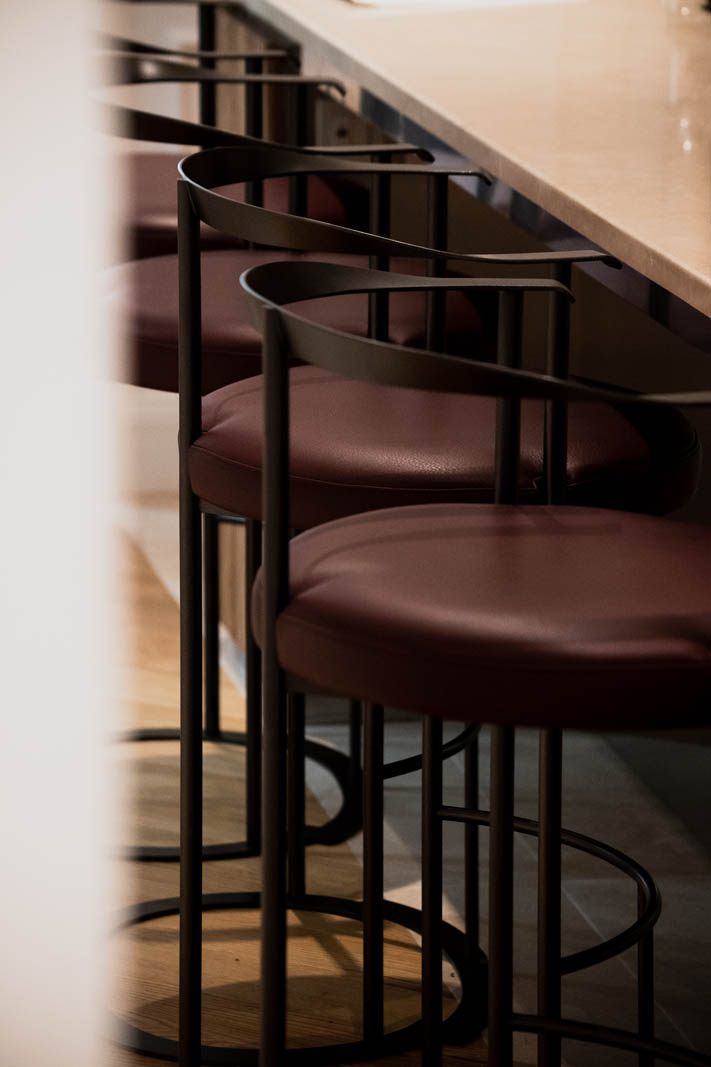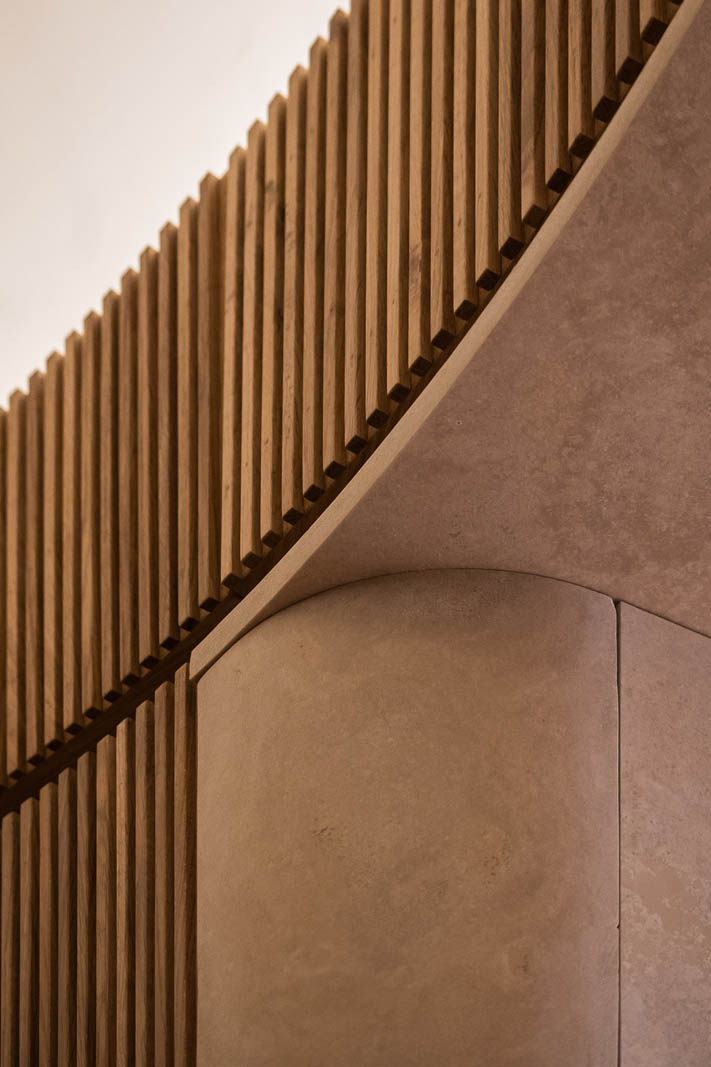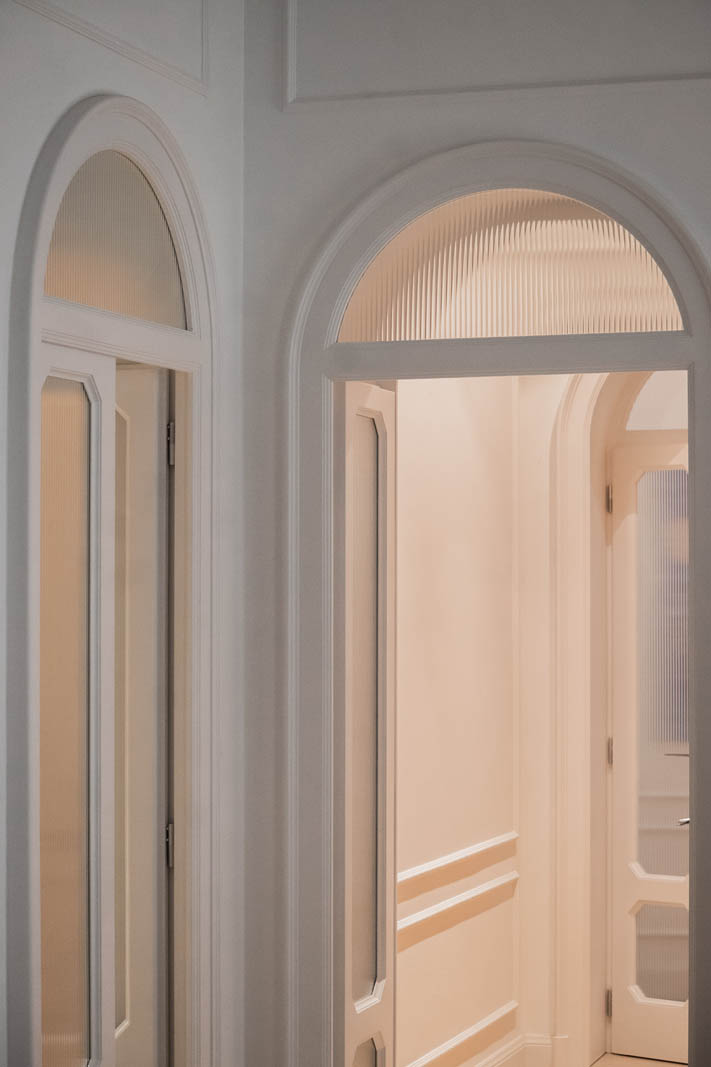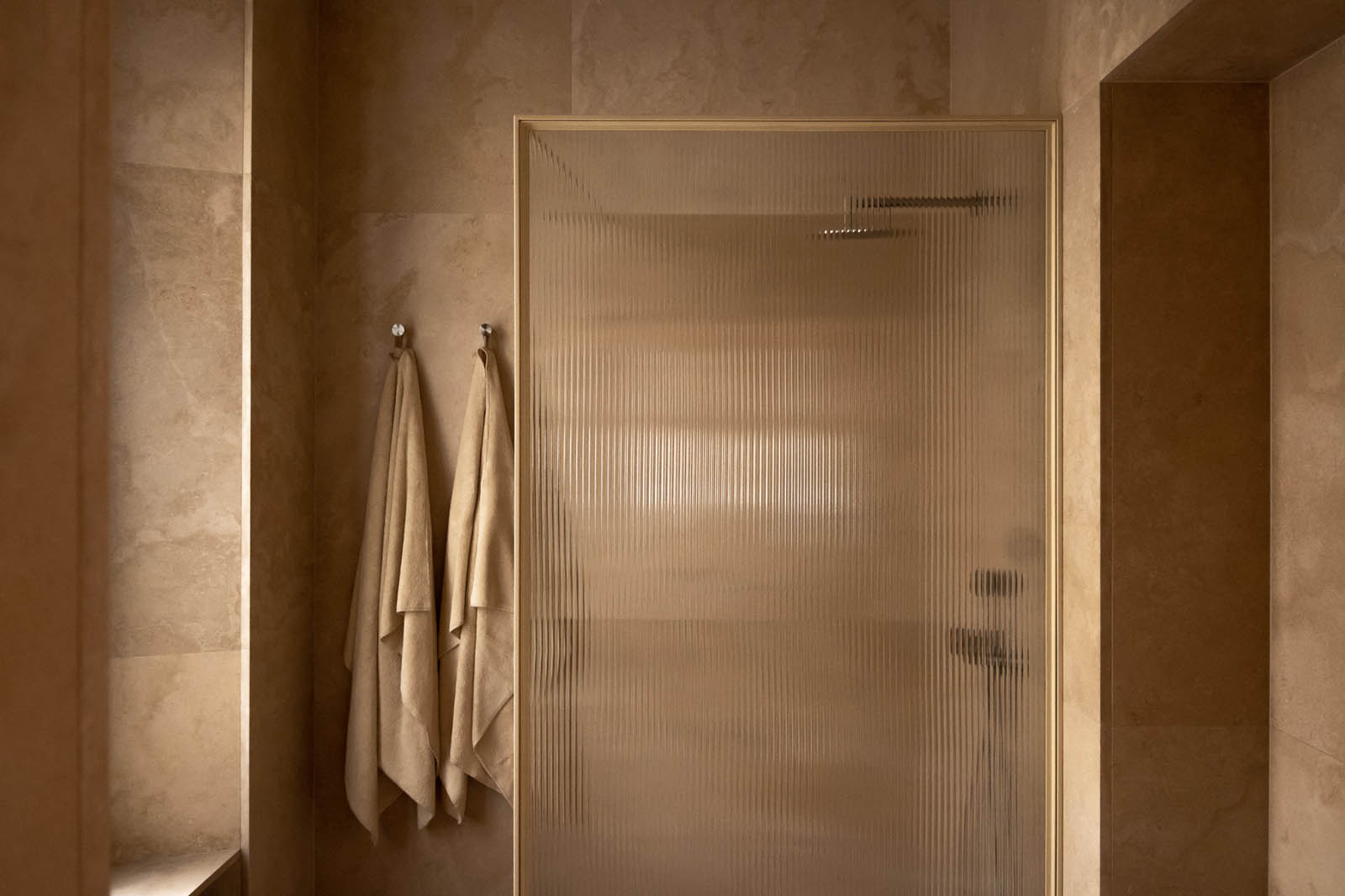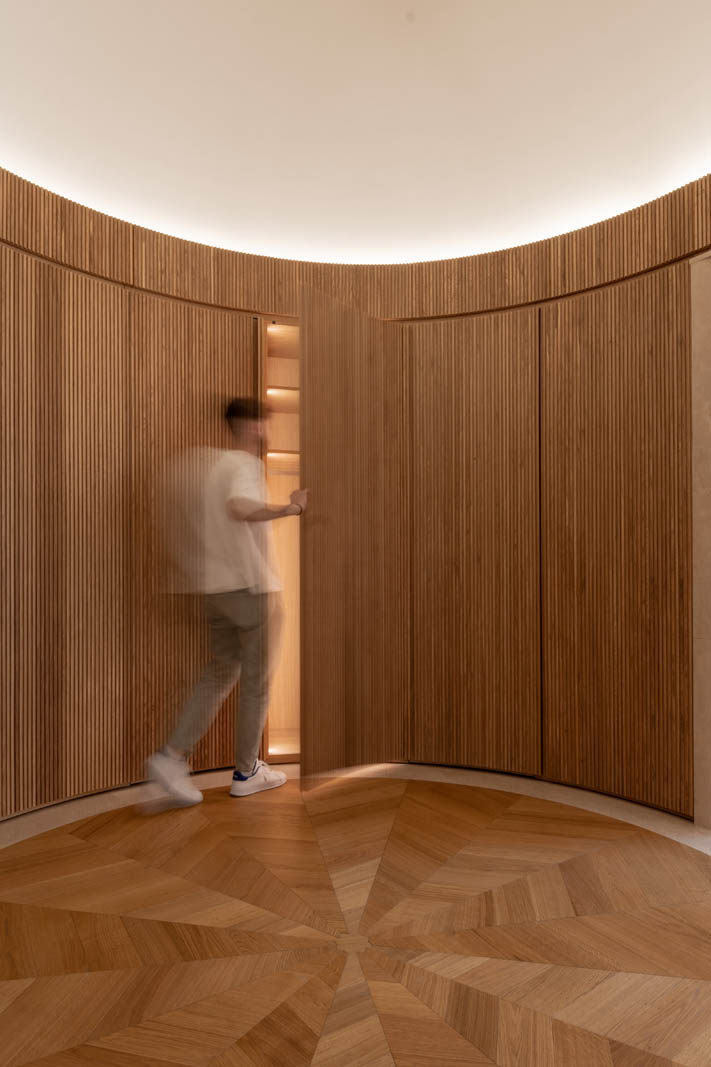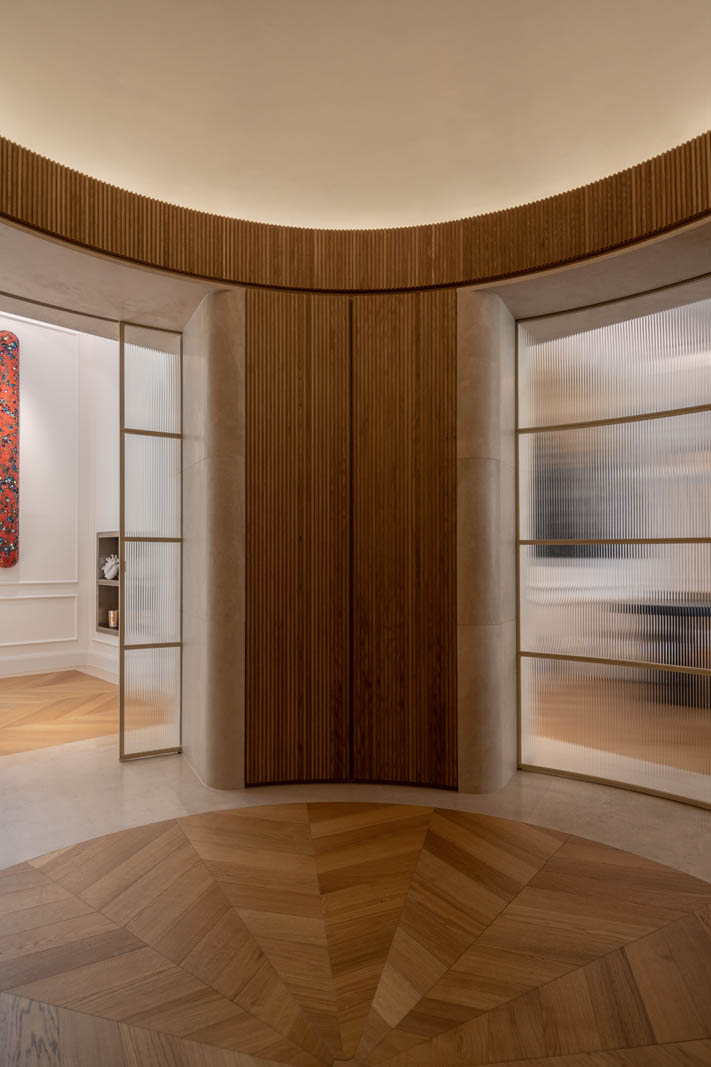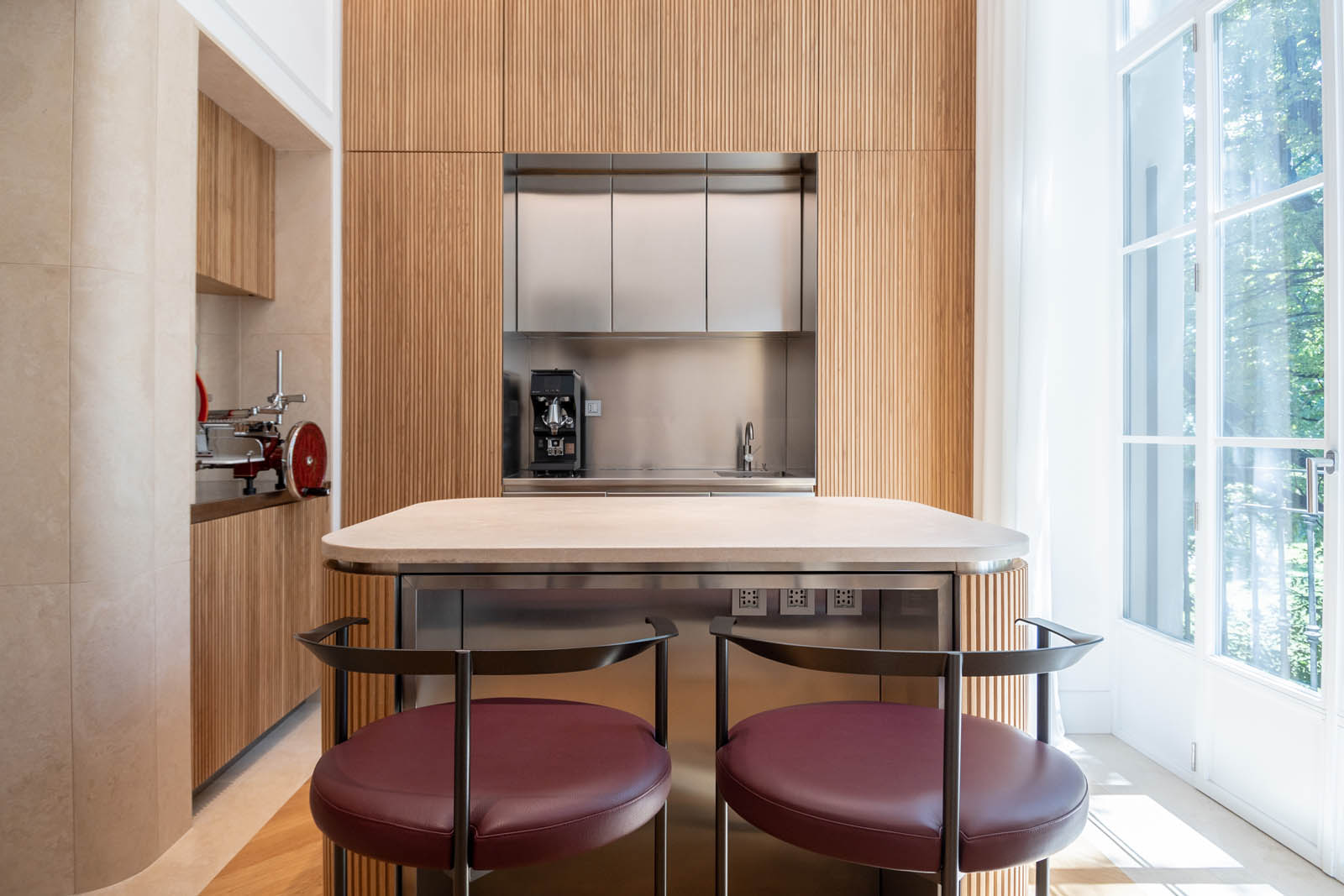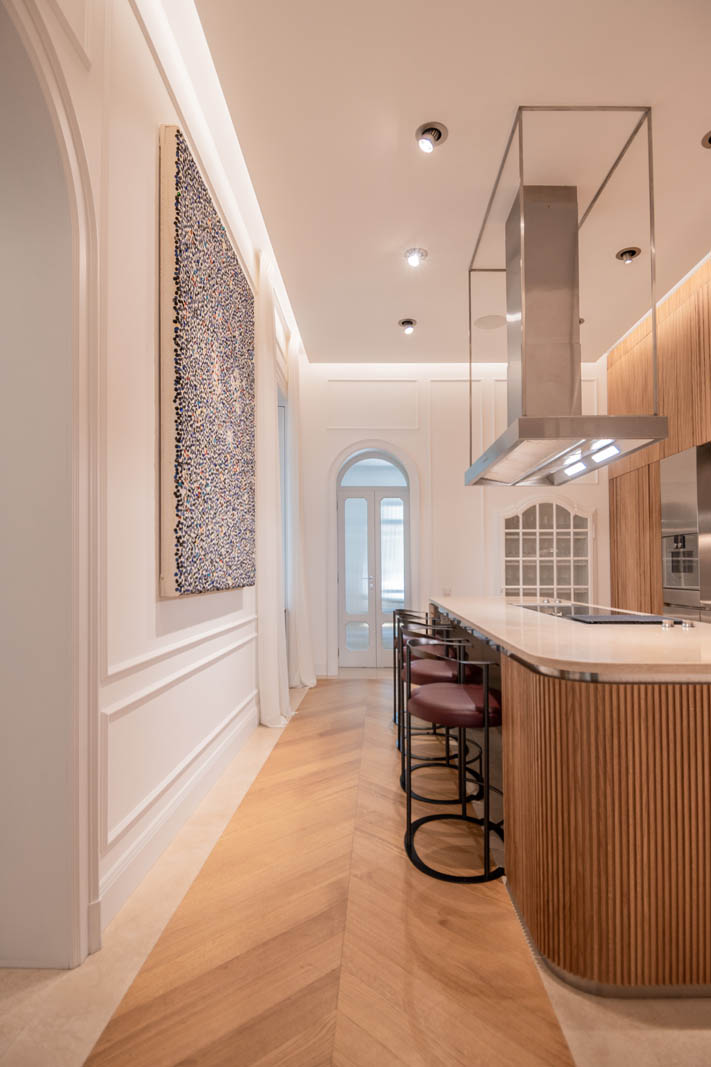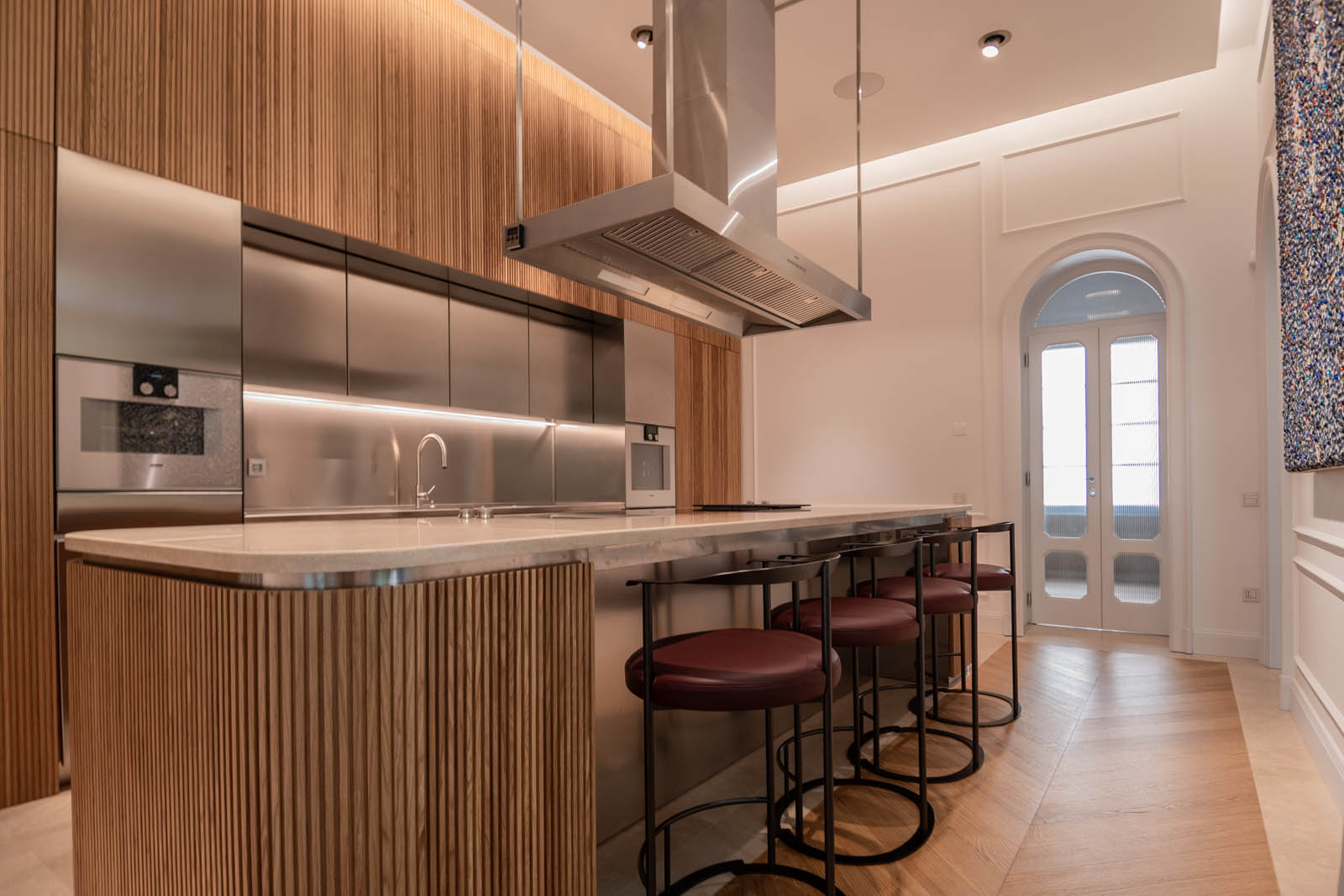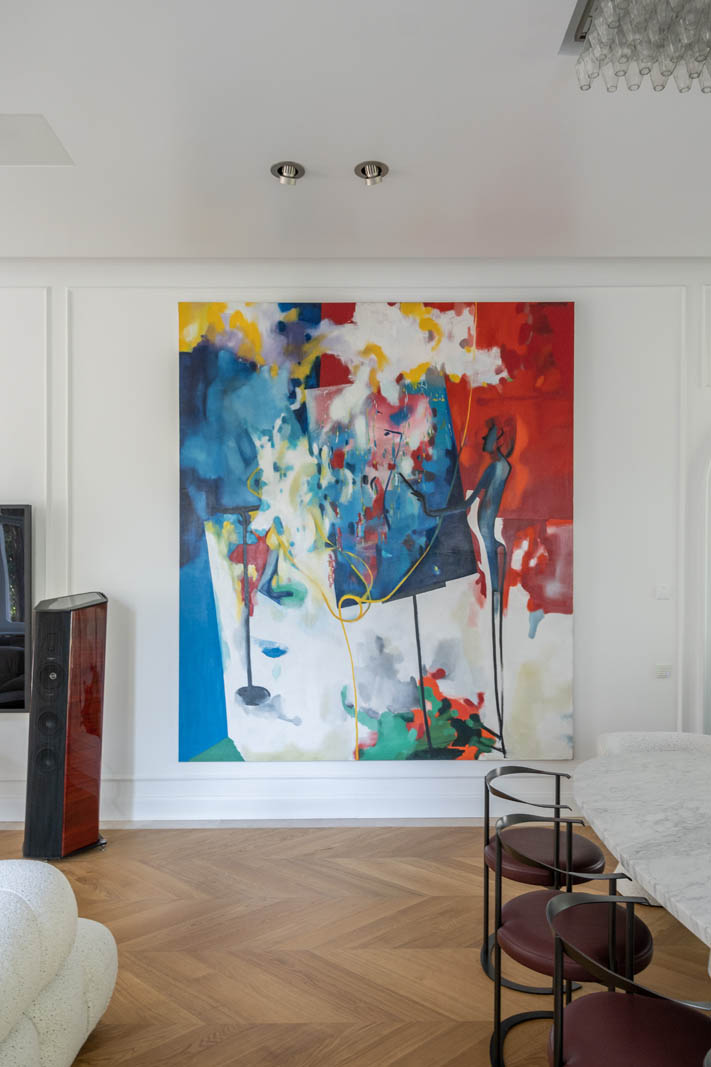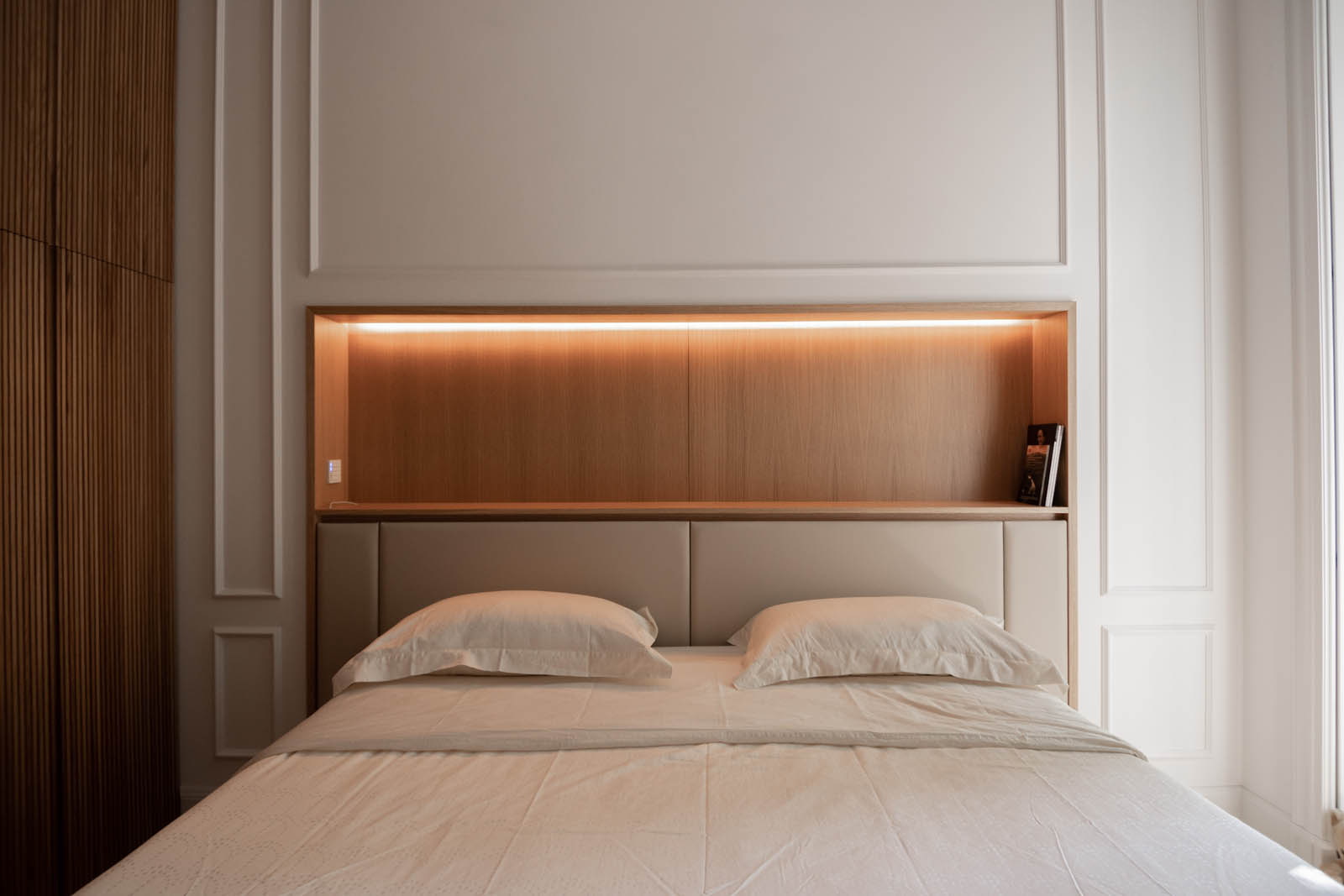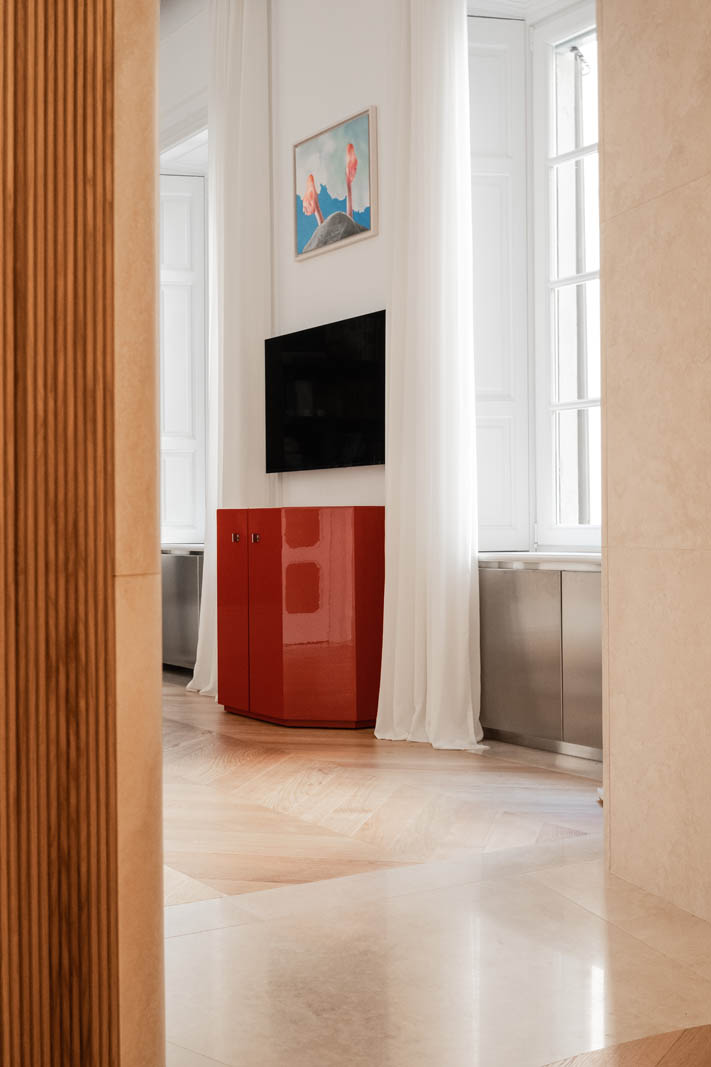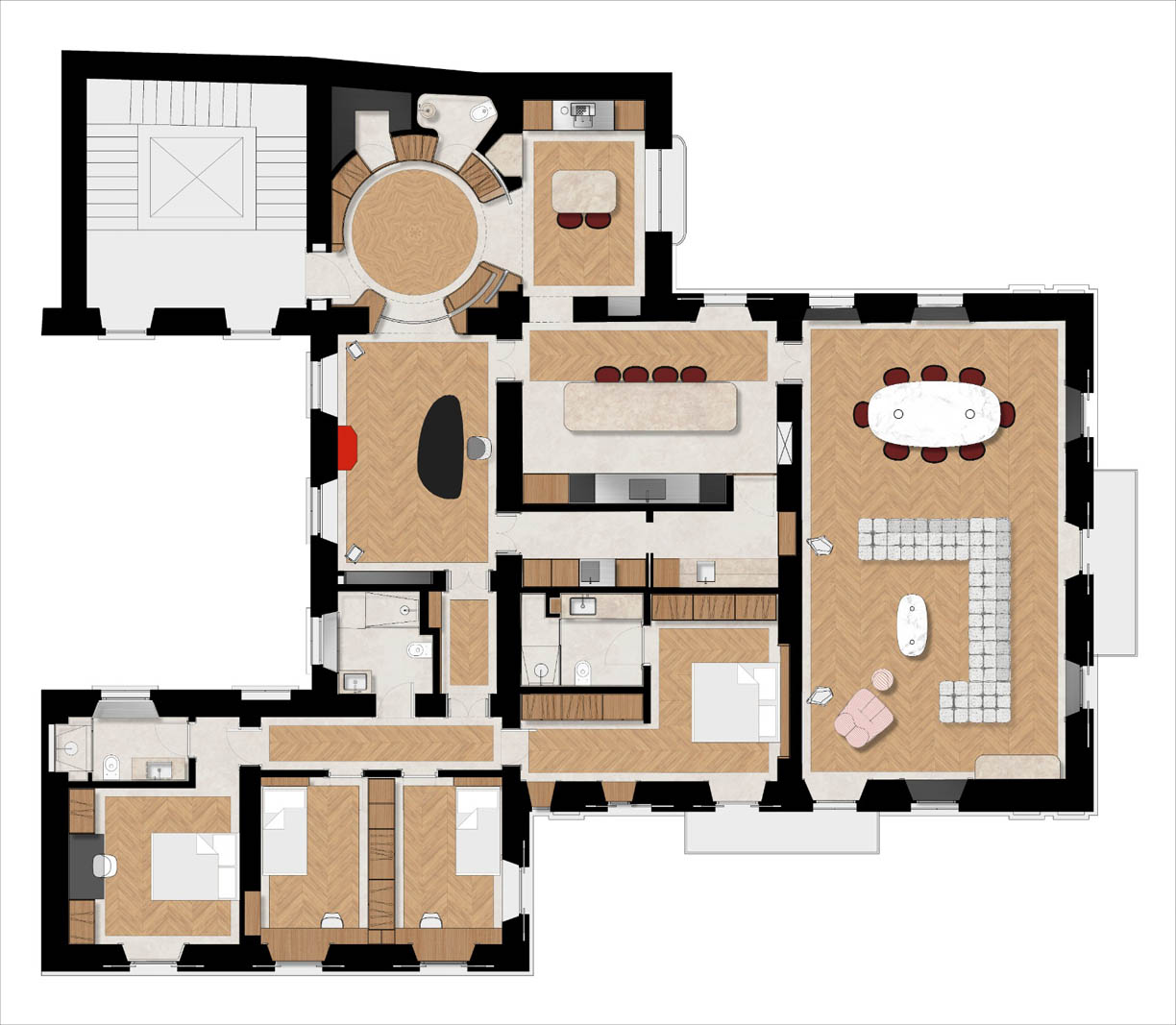Copertina

Dimora Magenta
Dimora Magenta
Time at Two Speeds
Central Milan, Daytime Interior.
A large and elegant noble house on the first floor is flooded with natural light. Light dust dances suspended as it crosses the Italian oak herringbone parquet. The traffic below is barely noticeable, only the clattering of tram number 18 can be heard. Today, the sun shines in Milan.
A series of large windows overlooking Corso Magenta frame what, thanks to Bramante’s intervention, is the most eloquent example of Lombard Renaissance: the Church of Santa Maria delle Grazie, a sacred space and UNESCO heritage site, where Leonardo da Vinci painted “The Last Supper.”
From this powerful reference, the project concept arises—a home that makes dialogue with history its strong point, a connection between past and present, staging dialectical relationships: with the historic walls in which the living space is inscribed, but also with the surrounding architecture and its profound meanings.
It embodies both a temporal and atemporal dimension, capable of operating at different speeds. There is the slow time of history, of the stratified city, of the spiritual dimension. And then there is the frenetic time of today, the one that flows quickly and looks far ahead, to the future, to a new chapter to be written. There is the time of parents and the time of children.
Dimora Magenta is a suspended place, a protected space where one can pause, welcome, and gather the family nucleus. The large apartment belongs to a family of art lovers and collectors who have recently returned to Italy after a long period abroad.
For this reason, and to accommodate new uses and experiences, the layout has been entirely reinterpreted from its original configuration—classic early 20th-century Milanese style—reorganized, subjected to structural consolidations, and designed as a precious sequence of spacious environments, each conceived as an emotional interpretation of an intimate and cozy condition. Yet incredibly efficient.
A domestic space that plays on a dual register: the architectural envelope tells a classic aesthetic, meticulously crafted with sartorial details, an equilibrium made up of references between epochs, iconic design pieces, artworks, and exquisite artisanal materials and workmanship. The best of made in Italy.
Beneath the surface, however, the intervention hides a high-tech, highly international soul that catapults the environment into a hyper-contemporary dimension of integrated home automation (managed by an RTI processor that controls sound, lighting, heating, and air conditioning), precise lighting systems, and an impressive audio-video system where all rooms—including the bathrooms—are sound-equipped with a multi-room stereo system featuring high-end in-wall speakers, and the main living room has high-quality 2-channel stereo with Dolby Digital and Dolby Atmos Home Theater.
A house with a strong personality, neither minimal nor monochromatic. On the contrary, the design choice by Bevilacqua Architects is precise and clear: to prefer contamination, coexistence, and complexity over simplification. “The soul of this intervention comes to life from the union of contrasting languages and solutions,” says Marco Bevilacqua, head of the firm, “through insertions and fusions that interact with the classical pre-existence without generating interference, rather imprinting a twist. A delicate re-stitching, achieved through the expertly balanced gestures of Italian artisans. All fixed furnishings here are custom-made. The others, however, are colorful, pop, avant-garde—a selection that declares its strangeness, and for this reason, its expressive strength.”
Starting from the entrance, a homage referencing the dome of Santa Maria delle Grazie. An almost sacred space, a ritual threshold between the outside and the inside, reinterpreted by the designers as an envelope within an envelope, rendered circular thanks to a new skin of oak strips that conceal cabinets and welcome curved glass sliding doors. Or the kitchen, with its large custom island, capable of becoming the pivot around which family life revolves. Each container element here is custom-made, in oak strips and stainless steel, with travertine countertops, Gaggenau appliances, and hood.
The sleeping area and bathrooms are designed as private spaces for comfort and relaxation, featuring matte travertine flooring and cladding, plywood furniture with oak strips and marble tops, artisanal shower boxes with painted stainless steel structures and laminated glass.
And then the spacious living area, the elegant living room, a space with a contemporary and technological soul, albeit hidden, an ideal meeting point for togetherness, a true hearth. Preserved in its original lines, the container—like in a home-gallery—chooses to offer the best possible stage: the neutral chromatic tones and the precious natural materials of the surfaces are indeed made vibrant by a careful selection of contrasting furnishings—icons of made in Italy design—and colorful contemporary artworks.
The choice of pieces incorporated into the interior project indeed tells that idea of creative contamination, complexity, and details that make the difference: most of those selected by Bevilacqua Architects were extremely innovative—almost provocative—at the time of their conception. From Charlotte Perriand’s “table en forme libre” (1938) to Eero Saarinen’s Tulip table for Knoll International (1955), from the two large Poliedri chandeliers by Carlo Scarpa for Venini (1960) to the Catilina chairs by Caccia Dominioni for Azucena (1957), from the Eros table by Mangiarotti (1971) to the Camaleonda sofa by Mario Bellini for B&B Italia (1970).
The artificial lighting (by Viabizzuno) is designed with the same purpose: to highlight, emphasize architectural details, and create an atmosphere that lies between mid-20th century Milan and contemporary domestic space.
CREDITI
Milan
Architectural Project: Bevilacqua Architects, Marco and Marta Bevilacqua
Collaborators: Flavia Rosano, Daniele Giovagnoli, Martina Passeri, Alfonso Rodriguez.
Project Manager: Marco Fumagalli
Structural Project: Eng. Tommaso Zanardi
HiFi and Home Automation Project: Di Prinzio & Top Class
Construction Company, Systems, and Structures: EdilPietro srl
Furnishings and Carpentry: Branca Lab, Andrea Branca
Fabrics and Upholstery: Boccascena Atri&Mestieri
Lighting: Viabizzuno
Sockets and Switches: Ekinex
Appliances: Gaggenau
Sinks and Sanitary Ware: Flaminia
Faucets: CEA
Texts: Giulia Mura
FURNISHINGS:
Charlotte Perriand “table en forme libre” (Cassina)
Saarinen Tulip Table (Knoll International)
Poliedri by Carlo Scarpa (Venini)
Catalina Chairs by Caccia Dominioni (Azucena)
Eros Table by Mangiarotti (Agapecasa)
Camaleonda Sofa by Mario Bellini (B&B Italia)
PHOTOGRAPHY: © Riccardo Pelliccia, Daniele Giovagnoli
ARTWORKS
Lynda Benglis
Untitled III, 201718
Carrara marble
80 x 100 x 53 cm approx.
Living Room
Maggi Hambling
Aleppo III, 2016
Oil on canvas
183 x 213 cm
Studio
Marco Cingolani
San Luca cerca di dipingere, 1999
Oil on linen
300 x 250 cm
Living Room
Robert Feintuch
Legs Up, 2013
Polymer emulsion on honeycomb panel
71.12 x 91.44 cm
Studio
John Torreano
Old Helix, 1974
Acrylic paint and acrylic gems on wood
213 x 20.3 x 10 cm approx.
John Torreano
Robber’s Eyes, 1995
Acrylic gems and acrylic on wood
243 x 30 x 15 cm approx.
John Torreano
Longmore’s Group, 1981
Glass gems and acrylic on canvas
203 x 152 cm
Kitchen


